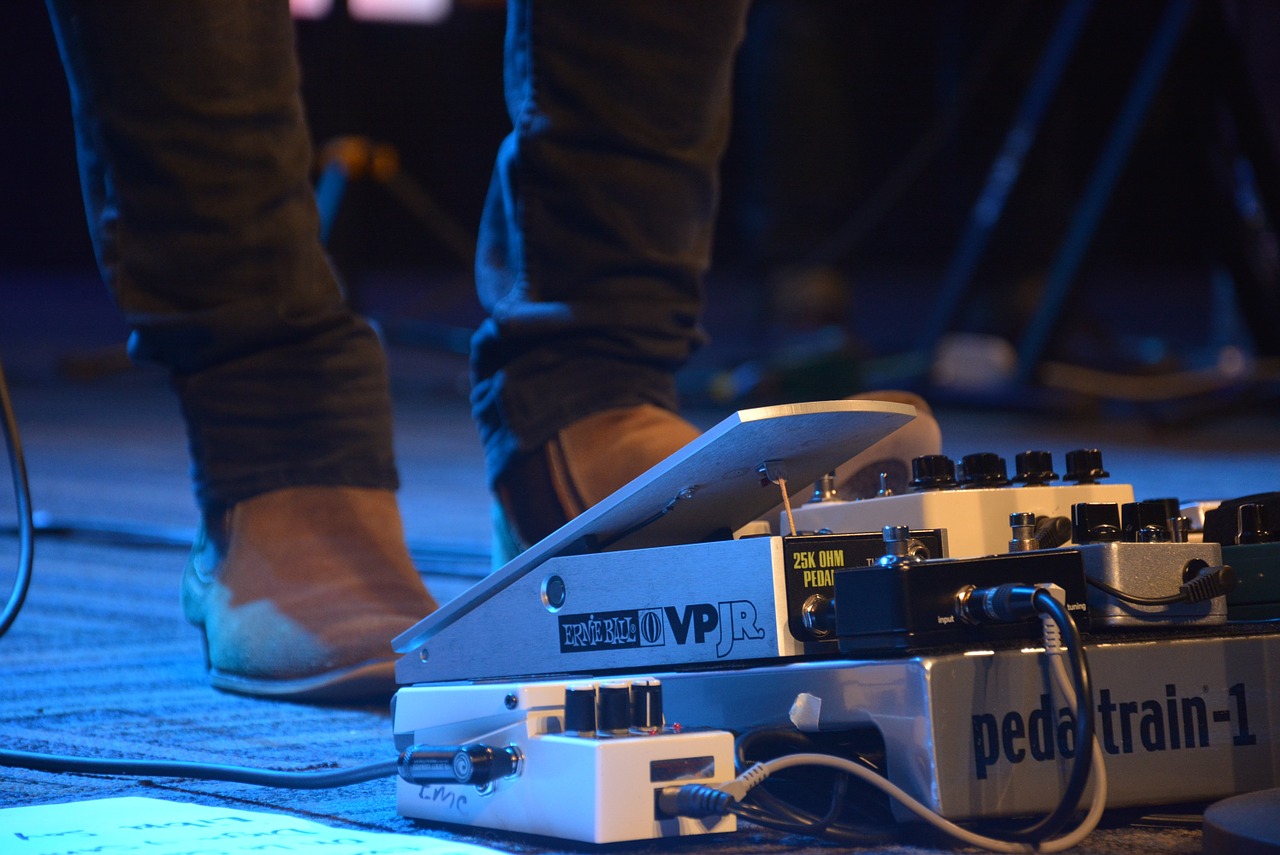Logical Order of Effects
1. Tuner
2. Wah
3. Acoustic simulator
4. Compressor
5. Overdrive
6. Equalizer
7. Noise suppression
8. Pitch effects (pitch shifters, vibrato etc)
9. Modulation (chorus, flanger etc)
10. Volume
11. Delay
12. Reverb
13. Looping pedal
Guitar effects can be a powerful asset to your tone. They can add the icing to the cake when used at the correct times. Effects pedals have come a long way in recent years. In the past it was necessary to lug around sophisticated rack gear to get those lush chorus sweeps and atmospheric ping pong delays. These days, modelling technology allows you to achieve remarkably similar sound quality from a $100 effects pedal! When it comes to the order of your effects pedals, there are no hard rules that apply. Although there are general guidelines to achieve the smoothest signal chain, you inevitably need to go with what sounds best to your ears.
Effects Loops
If you’re using a drive channel on an amp, you may run in to some issues in regards to effects placement. For example, if you want to apply a delay effect, you will find that by plugging a delay pedal into the input of your amp, the delay effect ends up being present before the distortion in the chain. What we are left with is a cluttered sounding delay that lacks the tonal quality of the effect being present later in the chain.
To combat this issue, many amplifier manufacturers have included an effects loop. This allows you to insert effects between the power amp and preamp section of your amplifier. There are 2 different types of effects loops, namely series and parallel. Time based effects like delay and reverb work best in parallel effects loops. Note that an effects loop usually runs at a different volume level to the input of an amplifier. You will need a rack mount effects processor that can run at +4dB (line level) as opposed to -10dB (instrument level). TC Electronics have designed an effects unit specifically for guitarists called the G-Major (now discontinued).
True Bypass
Keep in mind that every pedal you add to your chain is going to add “flavor” meaning that even if the pedal is turned off, it will still slightly alter your tone. Some manufacturers have introduced a feature called “true bypass”, which bypasses the pedals circuitry when it’s turned off, making it completely transparent. In my personal experience, however, pedals that claim to be true bypass still alter your tone when turned off.
Switching Systems
Some players like the tonality adjustments of specific pedals in their chain. Guitarists such as myself, however, prefer to have each pedal completely out of the loop when they are turned off. To achieve this, you will need to use a switching system. Some pedal boards offer this feature by providing a number of effects loops which connect to each pedal separately. Each loop becomes its own switchable circuit by the pedal system.

Using Effects Musically
If you’re going to throw an equalizer pedal into your chain for “the fun of it”, it kind of defeats the intention of the pedal. Pedals have specific purposes, and unless you know exactly what you’re looking for from a certain pedal it probably shouldn’t be in your chain. A basic guitar sound consists of a clean and overdriven sound. You should become familiar with using these 2 sounds in a musical situation before you begin applying effects. The knobs on your guitar is in most cases, all the ‘pedals’ you’re going to need.
The way effects are used vary from player to player, however there are general guidelines that apply. First and foremost, too much of something is not always good. Think of having chocolate cake after every meal. Eventually you’re going to get tired of it. You should think of your guitar effects in the same way.

Very useful and undestandable article.
If I use a loop for some effects, would I activate/deactivate only certain pedal, or the loop would turn on/off the whole group?